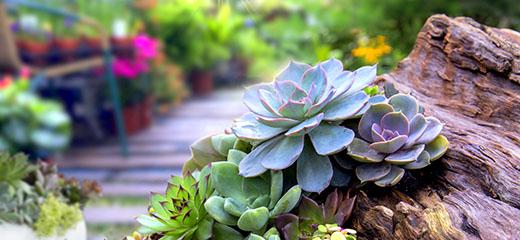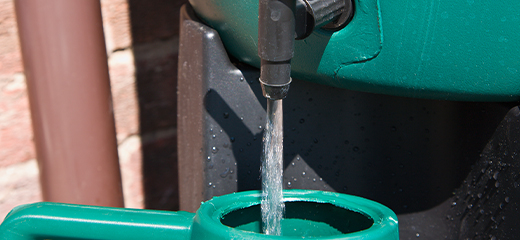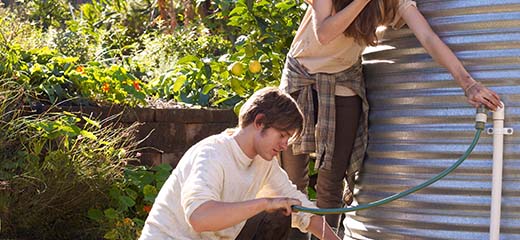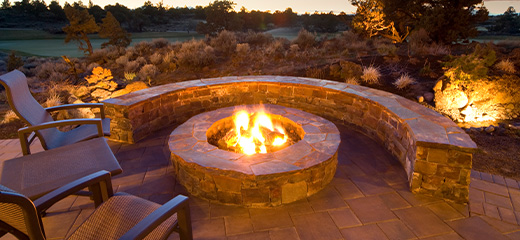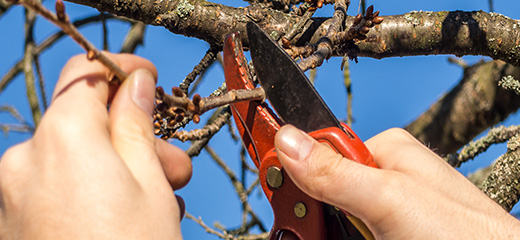
How to design a feature garden
A beautiful and well-maintained garden doesn’t just keep your neighbours envious; it increases the value of your home while also adding to your family’s health. And this doesn’t just apply to large gardens either. In fact, small and pocket gardens, patios and even balconies can benefit from a feature garden.
So, let’s start with the benefits. According to estate agents, your garden is often the first and last area of a home that potential buyers see and as the saying goes: first impressions last. An attractive garden can add to the appeal and value of your property.
As for health benefits, spending just a few quiet minutes relaxing in your garden has been shown to improve mood and the natural dose of vitamin D improves bone strength and boosts your immune system.
Scenic planning
Landscapers will tell you that the most attractive gardens start on paper. Creating a plan of the existing fixtures, lighting conditions and your dream outcomes will help you turn an ordinary garden into a paradise.
Don’t worry about drawing the plan to scale, you simply need to have a visual representation with the following elements included:
- Start with the basic outline of your garden and fill in fixed elements such as your home, garage, driveway, entertainment areas and trees.
- Note the lighting conditions of the various areas of your garden to show areas that get morning or afternoon sun, full sun, semi-shade and full shade. Using coloured pencils to lightly shade the areas can make visual planning much easier.
- Fill in the existing flower beds, shrubs and pot plants that you want to keep in your new garden design.
Think of features
Creating a dream garden isn’t all about plants. Adding a few features to your outdoor space can turn the ordinary into something magical.
- Having a seating area extends your home into the garden and gives you a comfortable place to enjoy the outdoors. If you have a large garden, you may want to think of an entertainment area for get-togethers with friends and family as well as a cosy nook elsewhere in the garden for quiet reflection or sundowners. Even if you have a small or balcony garden, including a small seat into your design will give you hours of joy.
- Pathways can be a striking addition to your design, ensuring high-traffic areas are kept looking good and taking the eye on a journey around the garden.
- Pebble, stone or bark mulch gardens are attractive options for areas where not much grows, such as around the base of trees or portions of the garden that are exposed to the harsh sun. This option also supports effective drainage and prevents your garden from getting muddy.
- Container planting isn’t just for inside the home or balcony gardens, it offers a way to frame features, add height and draw attention. Your options in this regard are endless, from small hanging plant pots all the way to old wheelbarrows that have been repurposed. Another advantage to container planting is that you can move your plants around as the seasons change.
- Another way to add different heights to your garden is to make use of frames, trellises and even a pagoda or walkway. Training plants to climb these features can also add privacy to a special area or conceal areas that don’t fit in with your design.
- The sound of trickling water is soothing for the soul but, in South Africa’s climate, it can drive your water bill up more than you might think. If you are set on having a water feature opt for a smaller size and place it in an area that does not get sun.
- Garden art has come a long way since the days of colourful garden gnomes and can give your outdoor area a touch of personality. Today you have many options to choose from including wall art, mosaics, statues, iron sculptures, furniture, mirrors, and even old household items.
- Extend your hours of outdoor enjoyment by adding ambient garden lighting to your finished design. There are many outdoor lighting options to choose from including ground, mounted and recessed fixtures, standing pillar or movable spiked fittings, and string or fairy lights. Speak to your garden or hardware store about solar and energy-efficient options that are safe to use outdoors and can cope with being exposed to the elements.
